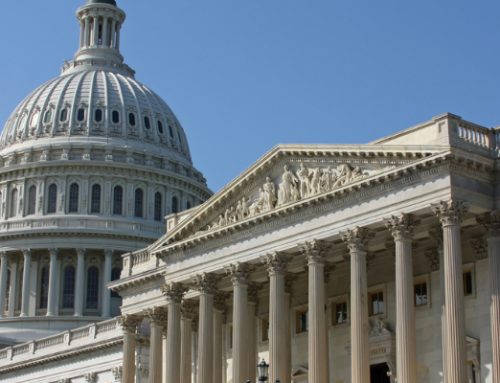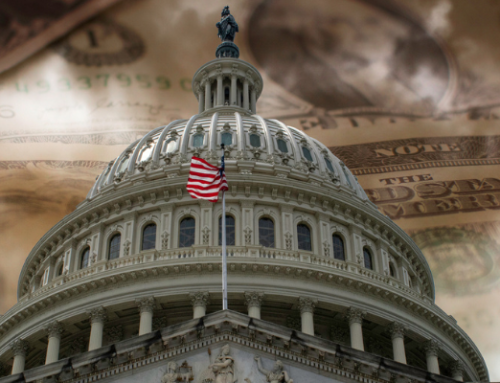The Inflation Reduction Act has dozens of provisions for energy tax incentives, a new minimum book tax on corporate income, and several healthcare-related changes. Among them is an extension of the Affordable Care Act (ACA) healthcare premium tax credits. Without Congressional action, the Marketplace healthcare premiums were set to increase by upwards of 50 percent for about 13 million Americans next year.
Expansion of Healthcare Subsidies Through 2025
The ACA saw its highest number of enrollees in 2022 in the 12 years since the federal Marketplace became an option to buy health insurance. Just this year, six million new enrollees joined the exchanges. Subsidies were a big part of the draw for many people.
In 2022, 13 million of the estimated 14.5 million enrollees qualified for some type of financial assistance, whether that’s lower premiums or cost-sharing for co-pays and deductibles.
Healthcare subsidies, which help most people lower their monthly Marketplace premiums, including many small business owners, were previously only available to people making between 100 and 400 percent of the federal poverty level based on household income. In 2021 and 2022, the American Rescue Plan Act temporarily removed this income cap to allow more individuals to qualify for these valuable ACA subsidies.
Taxpayers who make more than 400 percent of the poverty level would have their monthly premiums capped at 8.5 percent of household income and not require the full repayment of the ACA subsidies they receive during the year. This change resulted in significant savings for many taxpayers that were looking at possible significant ACA premium tax credit repayment liabilities on their 2021 or 2022 individual tax returns, even if their annual household income ended up just one dollar over the 400 percent threshold.
The Inflation Reduction Act now keeps these 2020 and 2021 valuable subsidy changes in place through 2025.
Without this expansion through 2025, many monthly ACA premiums would have increased by 25 to 50 percent or more starting in 2023 and the dreaded ACA “subsidy cliff” would have returned for those taxpayers with income over 400 percent of the federal poverty level. The upcoming 2023 open enrollment period for the ACA Marketplace would have been distressing for many taxpayers without the Inflation Reduction Act changes.
A similar extension had been proposed in Build Back Better, but that legislation never made it out of the Senate back in 2021.
Separate from the Inflation Reduction Act but in part because of its focus on extending ACA healthcare subsidies, the Biden Administration has authorized $100 million in funding to support so-called navigator organizations. These organizations will be tasked with helping to expand the reach and access of the ACA in low-income and underserved communities and to help enrollees transition off Medicaid and into Marketplace plans, when appropriate.
ACA in North Carolina
The Inflation Reduction Act was welcome news for many North Carolina residents and small business owners, who rely on federal Marketplace coverage and financial assistance through subsidies.
93 percent of North Carolina enrollees qualify for healthcare subsidies, and the amount of the subsidy is higher than the national average at $607, compared to $417 nationwide. Starting in 2021, federal subsidies became available for residents if they paid more than 8.5 percent of household income on health insurance. The average monthly premium in 2021 in North Carolina was $446.30, with variances between Bronze, Silver, and Gold plans.
Without the subsidy extension, North Carolina enrollees’ healthcare premiums were estimated to increase by an average of 38 percent.
Impact on Employers
Certain employers are still required to offer Minimum Essential Coverage (MEC) under the ACA’s Employer Mandate. If an employee has access to an employer-sponsored healthcare plan but it is deemed unaffordable, that employee would be eligible for Marketplace coverage and possible subsidies.
Up until now, an affordable plan had self-only coverage at less than 9.83 percent of household income. This so-called family glitch applied the percentage of income to the employee only; dependents were left out, meaning families with employer-sponsored coverage could be left paying significantly more than what they could get on the federal Marketplace.
The Inflation Reduction Act fixed the family glitch. This will save families with median income almost $1,000 a year in healthcare premiums. It also means that employers will need to ensure the portion of employee-paid premiums doesn’t exceed 9.61 percent of household income for an entire family.
Employers’ failure to offer affordable coverage results in penalties. The employer’s penalties increased in 2022, and are:
- $229.17/month or $2,750/year per employee (498OH(a) penalty for failing to offer MEC)
- This penalty is assessed on every full-time employee, minus 30, even if only one employee receives healthcare subsidies through the federal Marketplace.
- $343.33/month or $4,120/year per employee (498OH(b), the Employer Shared Responsibility Penalty)
- This penalty is levied only based on the affected full-time employee(s) who didn’t receive minimum value and affordability in the employer-sponsored health plan.
If an employer is found to be non-compliant, it will be assessed one of these penalties by the IRS, not both. The IRS notifies employers of the ACA penalties through a special 226J penalty notice.
There are also other penalties related to non-filing and incorrect filing of related year-end employer health tax forms.
MEC must be offered to 95 percent of full-time employees and dependents. Affordability is based on IRS calculations, which employers have been using for years now. If the IRS finds that an employer’s healthcare options fall outside the required limits for affordability and value, penalties can be assessed.
Generally, employers with 50 or more full-time and full-time equivalent employees are subject to the ACA employer mandate.
Tips For Marketplace Enrollees
The federal Marketplace health insurance plans have become a popular – and sometimes the only – option for self-employed individuals and workers without access to employer-sponsored health plans.
Just as with other health insurance plans, there is an annual open enrollment period for Marketplace plans, which typically takes place at the end of the calendar year. Outside of that period, only people with qualifying life events can buy or change their coverage. These events include marriage, divorce, the birth or adoption of a child, and in the case of the ACA, moving to a different zip code.
It’s also a good idea for enrollees to estimate their yearly income now, including their ownership share of any estimated pass-through business income such as S corporation or partnership income, especially if they expect to make more than last year. Healthcare subsidies are based on income, and it’s possible to owe money at tax time if income increased while subsidies remained tied to previous, lower income levels. Because these are essentially advance tax credits, it’s important to avoid paying too much or too little during the year.
Significant increases or decreases in income should be reported on the individual’s Marketplace account as soon as the change is noticed. Then, when Form 1095-A comes in the mail from the insurance marketplace in early 2023, make sure the subsidy amount listed is correct as the subsidy is required to be reconciled on your individual tax return to determine if additional premium tax credits are available or have to be repaid and included with your individual tax liability.
When calculating the cost of monthly premiums, it’s helpful to project future income throughout the year. This can include federal taxable wages, tips, self-employment income, commissions, bonuses, capital gains, dividends, and more. Self-employed workers whose income changes throughout the year may want to update their income with the Marketplace monthly, or at least quarterly. This can easily be done online.
The Inflation Reduction Act expanded affordable access to healthcare for millions of Americans, but it’s not without its considerations for both employers and individuals. Expanded coverage through 2025 will help to keep healthcare costs down for millions of Americans and help self-employed workers and business owners stay protected with access to affordable healthcare. Still, individuals can take steps to estimate the amount of their healthcare subsidy to avoid a surprise at tax time. Likewise, employers may want to re-evaluate their price points for employee-paid healthcare premiums to avoid steep penalties.
PBMares clients with questions about how the ACA subsidy extension will affect them can reach out to Charles Dean Smith, Jr., CPA and Partner in the firm’s New Bern, NC office.





